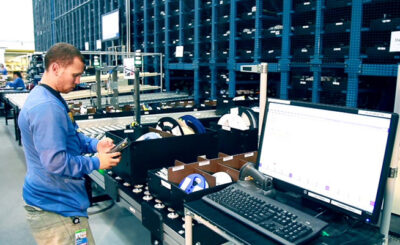In the highly competitive wash industry, maximizing revenue requires strategic planning, efficient operations, and a customer-centric approach. Whether you operate a car wash, a self-service laundry, or a mobile detailing service, implementing the right strategies can help you increase profitability and sustain long-term growth. Here are several actionable steps you can take to maximize your revenue in the wash industry, according to Spynr:
- Diversify Your Services
– Expand your service offerings to cater to a wider range of customers and increase revenue streams. For example, if you run a car wash, consider adding services such as detailing, waxing, interior cleaning, and ceramic coating.
– Offer package deals or bundled services to encourage customers to try multiple services at a discounted rate, increasing the overall value of their purchase.
- Implement Dynamic Pricing
– Utilize dynamic pricing strategies to adjust prices based on factors such as demand, time of day, weather conditions, and service complexity. For example, you can offer lower prices during off-peak hours to attract more customers and maximize capacity utilization.
– Consider implementing membership or subscription-based pricing models to encourage repeat business and secure predictable revenue streams.
- Enhance Customer Experience
– Focus on delivering exceptional customer service and creating a positive experience for every customer. Train staff to be friendly, knowledgeable, and attentive to customer needs.
– Invest in technology solutions such as mobile apps, online booking systems, and automated payment kiosks to streamline the customer experience and reduce wait times.
- Invest in Marketing and Promotion
– Develop a comprehensive marketing strategy to promote your wash business and attract new customers. Utilize a mix of online and offline marketing channels, including social media, email marketing, local advertising, and community events.
– Offer special promotions, discounts, and loyalty programs to incentivize repeat business and encourage customer referrals.
- Optimize Operational Efficiency
– Implement efficient workflows and processes to minimize downtime, reduce labor costs, and maximize throughput. Streamline equipment maintenance, scheduling, and inventory management to improve overall efficiency.
– Leverage technology solutions such as automated equipment, remote monitoring systems, and predictive maintenance tools to optimize operations and minimize disruptions.
- Focus on Quality and Consistency
– Prioritize quality and consistency in service delivery to build trust and loyalty among customers. Use high-quality products, equipment, and techniques to ensure superior results.
– Train staff to adhere to standardized procedures and quality standards, and regularly evaluate performance to identify areas for improvement.
- Leverage Data and Analytics
– Collect and analyze data on customer behavior, sales trends, and operational performance to identify opportunities for revenue optimization and cost reduction.
– Use insights from data analytics to make informed decisions about pricing, marketing strategies, service offerings, and operational improvements.
- Explore Additional Revenue Streams
– Look for opportunities to generate additional revenue through ancillary services or partnerships. For example, you could offer vending machines, retail merchandise, or refreshments to customers waiting for their vehicles or laundry.
– Consider diversifying into related businesses or industries, such as vehicle maintenance, eco-friendly products, or water recycling systems, to create new revenue streams and expand your market reach.
Conclusion
Focus on delivering value to customers, optimizing operations, and adapting to market changes to achieve long-term success and profitability.








